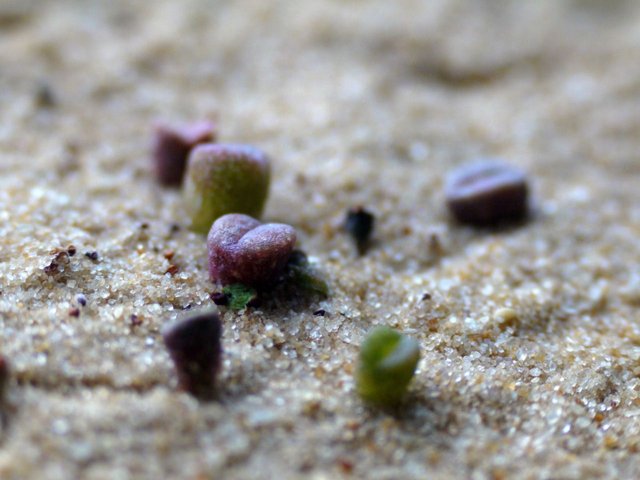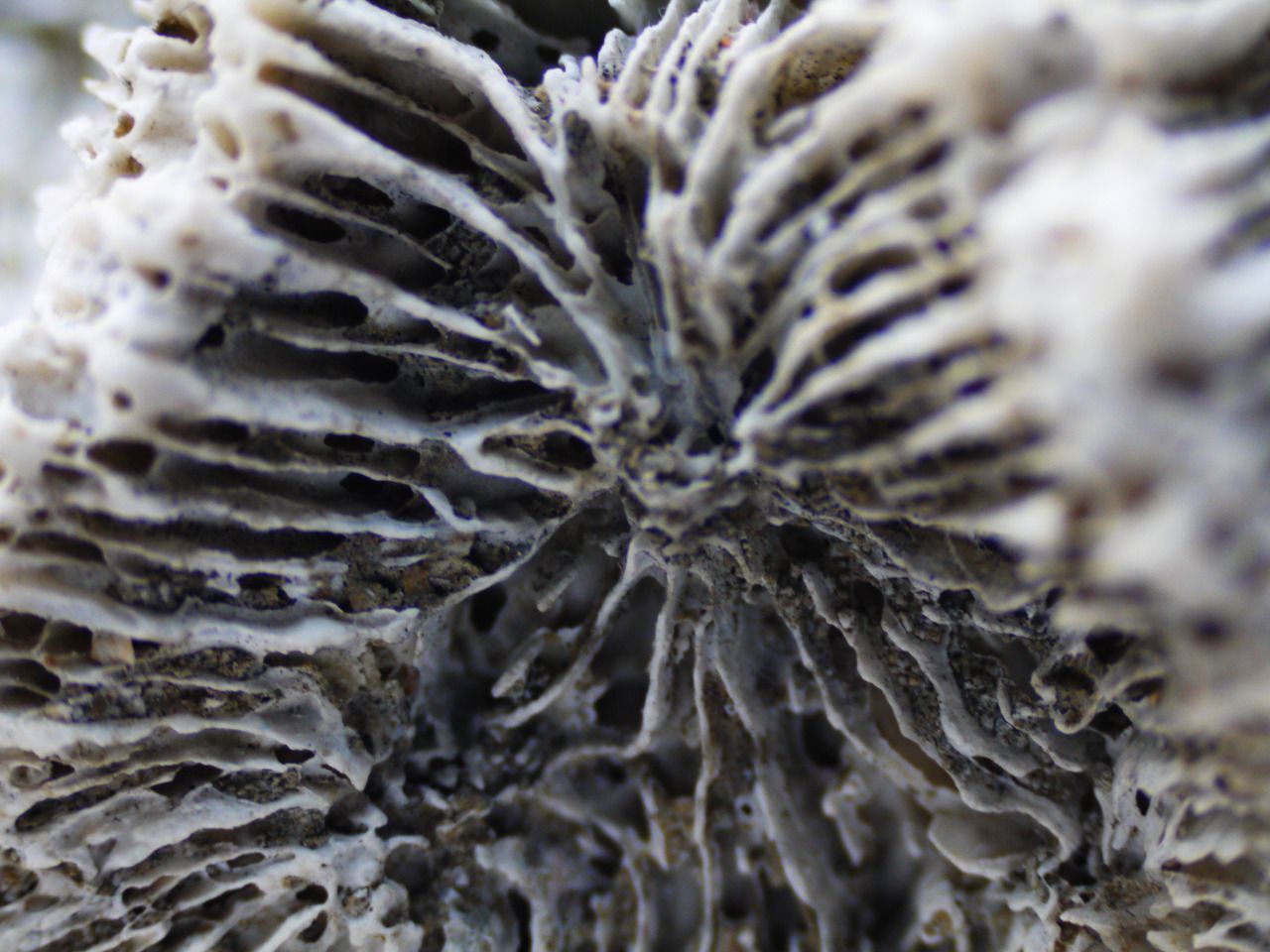Photomacrography
To give it the correct label is the photographing of small objects or details at a larger than 1:1 scale. Using a dedicated macro lens or sometimes, extender tubes & magnifying lenses ( I've tried them all) we can begin to peer down into the sub microscopic world around us. I even have a plastic macro attachment for my phone.. Actually, I have a couple of these cheap gizmos from a gadget shop. They're a bit limited but one is actually more like a microscope and produces a very close up image which is round. remind me to post some!
Macrophotography
Which we all know and love, more accurately describes the process of making very large photographs. So we've got that cleared up, on with the pictures.
Around the Home
When I first got a microscope (aged small) I trawled the house and garden looking for small things to examine and explore. It's no different these days ! I often take a macro lens to everyday objects so that I can see their texture and examine their structure. These images are from around my home and on windowsills.
Categories of Objects
The first image is a Daisy with it's fractal geometry looking every bit like a big Sunflower.. I used that one to get your attention, the other images are in little groups. They are related only as familiar household items / objects and I was tempted to let you guess what each one is. However, I think it will be more enjoyable for the reader if I describe the objects ;)

- A common Daisy rendered in Sunflower proportions displays an elegance and texture you have probably felt with your fingers a thousand times.

- Lithops or Living Stones are small desert succulents. I grew these from seed. From 100 seeds about 50 germinated and from them about 20 grew. They are 6 months old here, slow growing and unfortunately for them, they live in reversed seasons. They all come from the arid grounds of South Africa or South America in the Southern Hemisphere. So they get watered when all the other succulent and Cactus sleep (in our winter) and they have a rest in our summer ! odd but they seem to eventually get used to it. (I currently have 4 left from this batch which are looking quite strong and they have just moulted, which is how they grow.)

- A Coral skeleton close up reveals a complexity which is really fascinating. This is the old dead skeleton of the colony of creatures and symbionts (algae) who live together in a mutually beneficial relationship, (shelter for food!) until warming seas force the algae to leave and the coral polyps to bleach (die) which is threatening the whole marine ecosystem and planet, but that's another post.

- The many different forms created by corals, show natures creativity in experimentation with form. Each coral has a strategy for survival and the different shapes have advantages and disadvantages for the colony. Many of the attributes seem to be about maximising surface area, which for a filter feeder with a photosynthetic accomplice, is generally of high priority. @fracatalizer you'll like this ! (in fact he'll like the whole post.. it's fractaliscious.

- The Coral skeleton pieces are beautiful to look at as a large object but when you get down into the small detail it looks as though some advanced alien engineering has produced super efficient engine parts, which in their own way, they are. I'm sure as bio-mimetics continues to influence industrial design, we will improve a whole range of functional objects through the careful study and replication of nature's many magic tricks.

- Cactus spines form a close knit protective layer of crossed swords. In a desert where there's not much to eat and being a cactus is to be a valuable water source, having spines is an evolutionary advantage to protect oneself from over grazing..The living stones (Lithops above) went with a different strategy; camouflage. They took their chances and thereby save the energy growing tough spines to spend on growing instead. You could say they're clever, but considering the way they look is a result of random (adaptive mutation), you would conclude they are actually just very, very, very lucky.

- Anyone who has experienced Cactus spines knows they provide formidable protection. I wouldn't want to get my lips near a cactus spine. It's bad enough when they come off in your finger and can hurt for days if they're small enough to dig deep into the skin. These larger ones can draw blood and so have for millions of years not been replaced with something more subtle. I still love them, spines or not. cactus or succulent.

- This Cactus has a surprise. Underneath the seemingly soft & fluffy exterior lies a hidden surprise. Tough spines waiting for the unsuspecting grazer which will hopefully make them think again.. Once bitten, twice shy as they say. It seems an odd strategy but it's more likely if the real advantage of the fluff is that it condenses a nice morning drink for the plant from the scarce moisture of the daily desert dew drops.

- This partially decomposed seed pod has been washed ashore on a distant beach, showing the underlying structure which makes it's round durable, shape so strong.

- Seed pods from tropical trees and palms have evolved to travel thousands of miles in salty seas to colonise unwary and bare islands miles from nowhere. How ingenious our old nature is. So if you ever do get washed up on a desert Island, WILSON....... you will have the humble coconut to thank for your slim chance of survival, maybe.

- A white fluffy towel in close up.. now you can see how it's soft tufted fibres soak up all that water from your skin and give you an exfoliating dry while they're at it. Simple and brilliant.

- How does a pattern get into the fabric on your cotton shirt? It's either woven in using coloured threads or is printed after the fabric is woven like this one.

- A bath mat, made of synthetic fibres has a priority to soak up and (wick off) moisture from your feet and drippings from the rest of your body from said bath. Human ingenuity, no doubt inspired by a bit of bio-mimetic research.

- Another example of coloured cotton. How can you tell if it's printed or woven ? if it was woven, the weft would be white and the weave would be coloured thread, which you can't often see that well.. At this level of detail you can see.. it's a print !
it is such fun to play with macro - shows us what we have been living with all this time and not noticing =) Following you now
Downvoting a post can decrease pending rewards and make it less visible. Common reasons:
Submit
Thanks, @sallybeth23that's the great thing about magnifying glasses, they show you another way of understanding why and how things work.. there's quite a bit of macro in my feed.. I'm following you !
Downvoting a post can decrease pending rewards and make it less visible. Common reasons:
Submit
Worlds inside Worlds… Very interesting story and photos, @outerground. Upvoted, resteemed & DPS.
Downvoting a post can decrease pending rewards and make it less visible. Common reasons:
Submit
thanks @photo-trail (there are surely even more worlds inside these ones that we need a longer lens to see). It's been a tough week & I appreciate your support in my photographic endeavours.
Downvoting a post can decrease pending rewards and make it less visible. Common reasons:
Submit